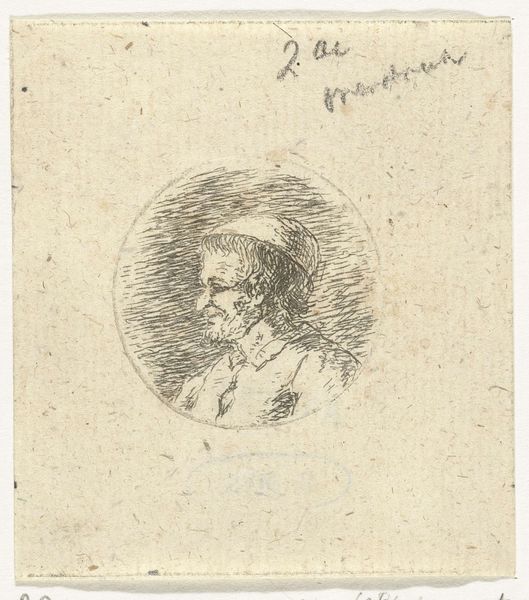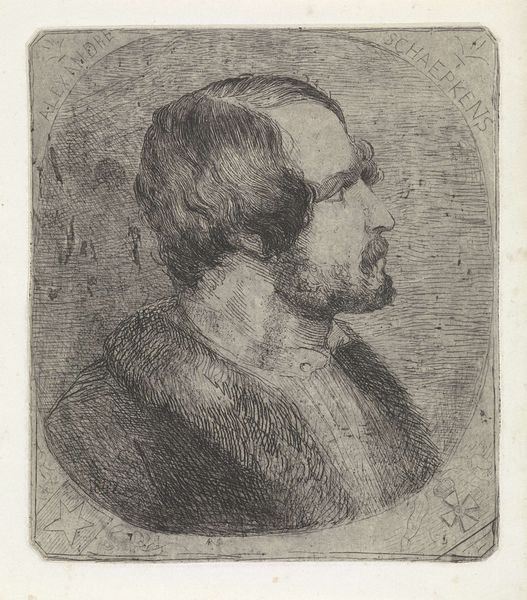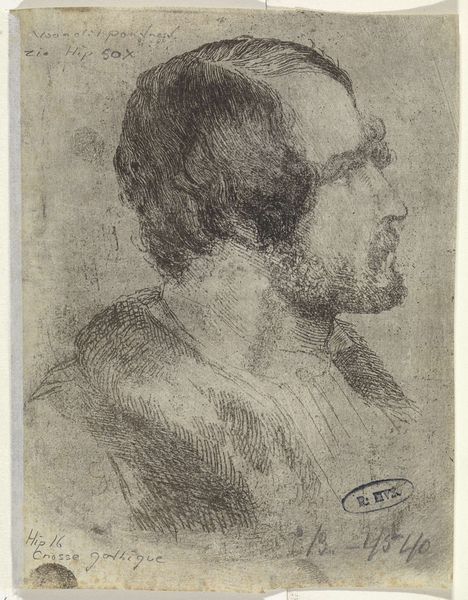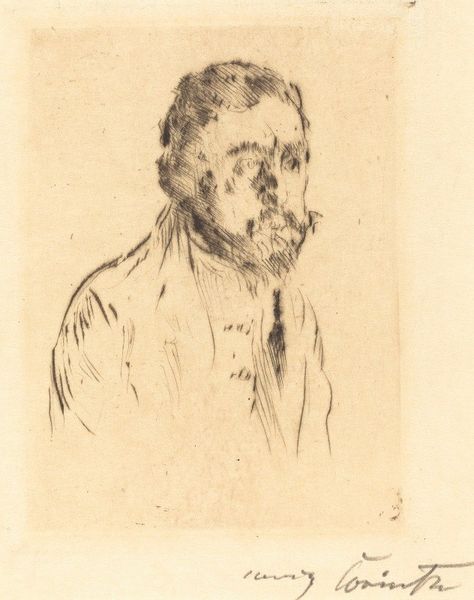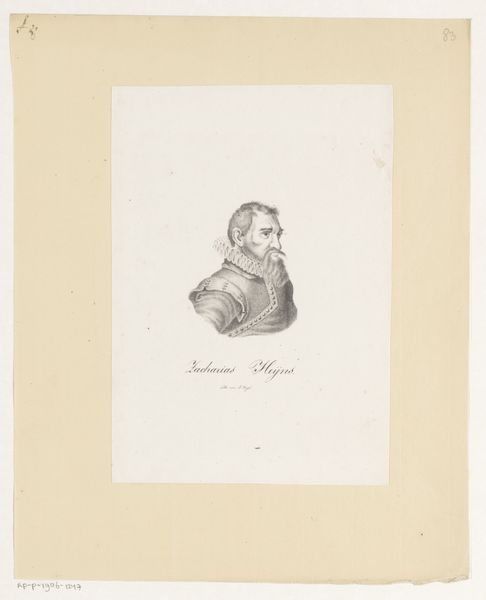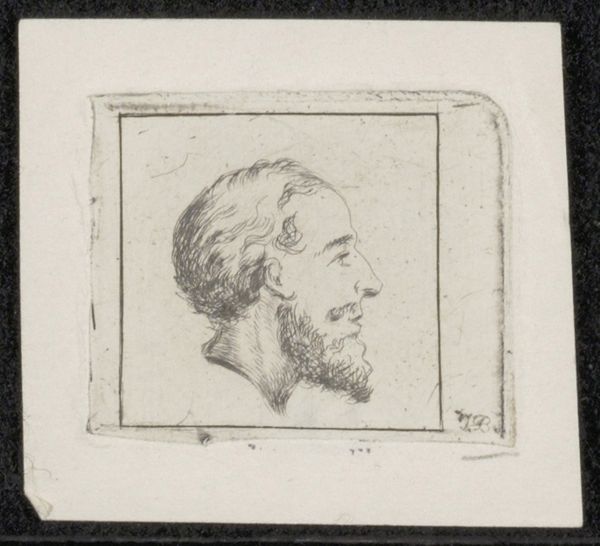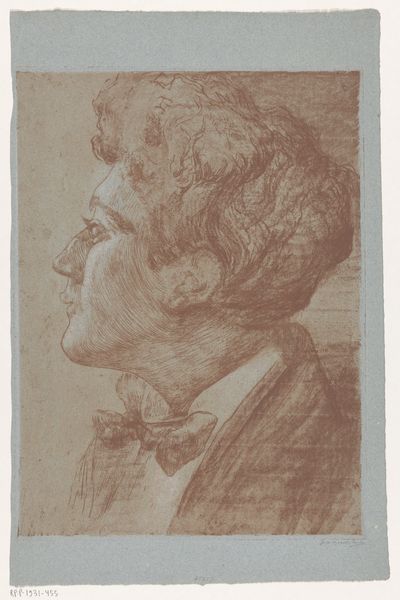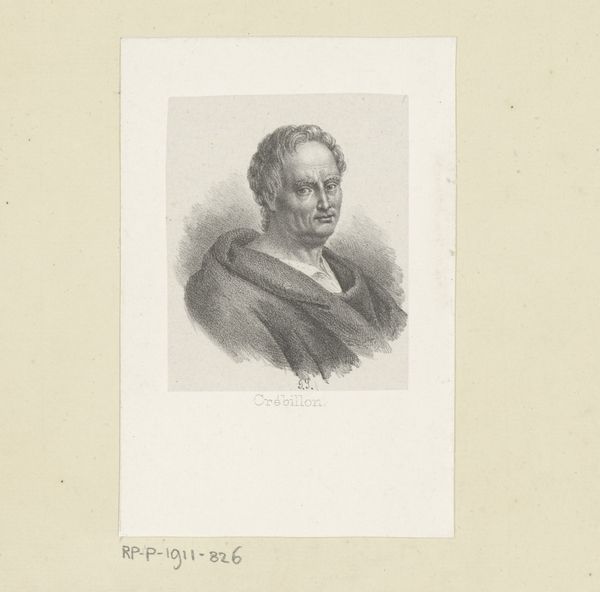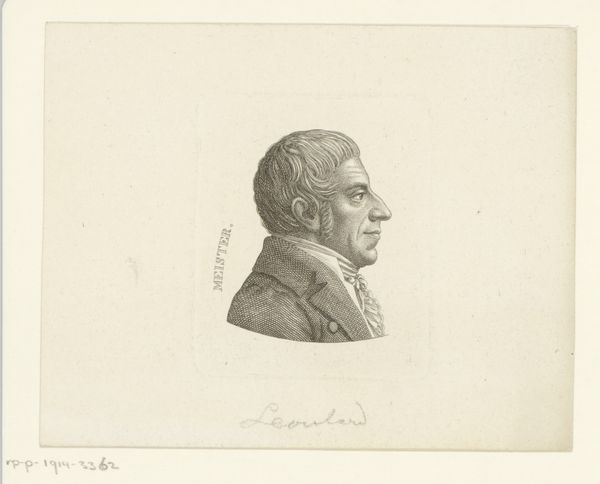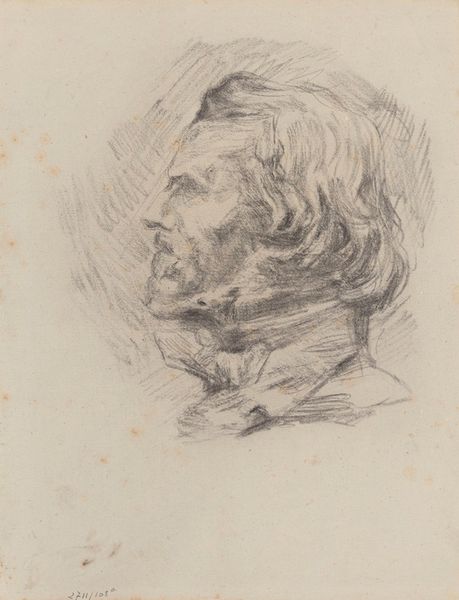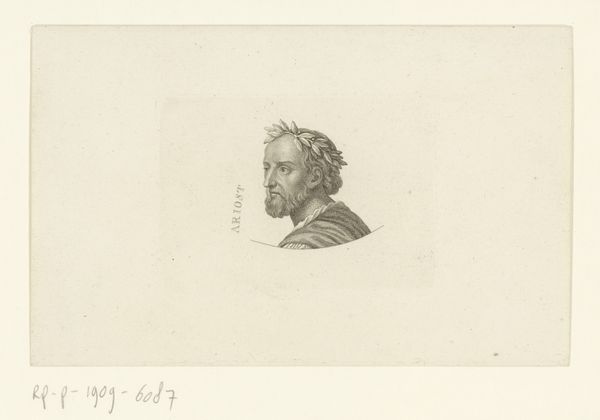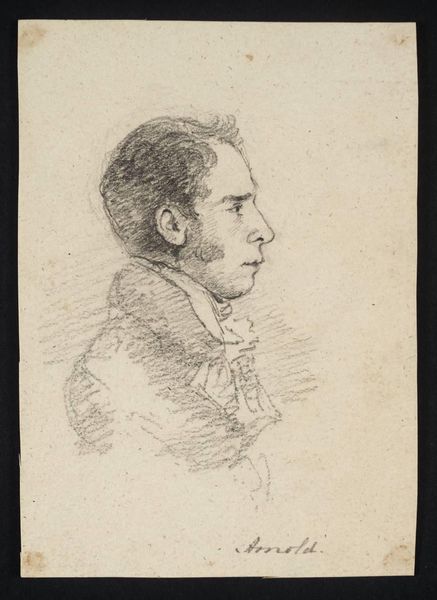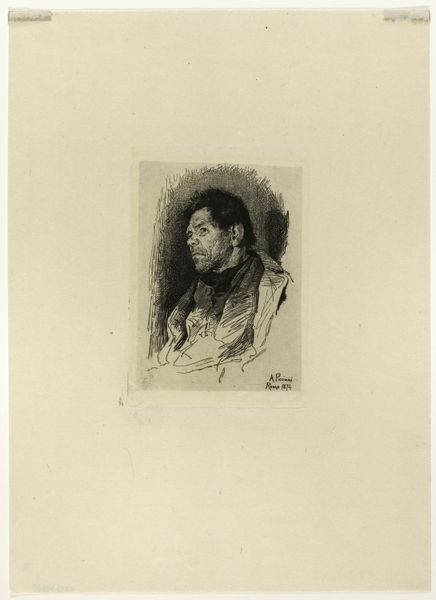
drawing, paper, ink
#
portrait
#
drawing
#
amateur sketch
#
light pencil work
#
self-portrait
#
quirky sketch
#
pen sketch
#
paper
#
personal sketchbook
#
ink
#
idea generation sketch
#
sketchwork
#
pen-ink sketch
#
line
#
sketchbook drawing
#
realism
#
initial sketch
Dimensions: height 53 mm, width 42 mm
Copyright: Rijks Museum: Open Domain
Curator: Right now, we are looking at a piece entitled, “Portret van prentmaker Alexander Schaepkens,” or "Portrait of printmaker Alexander Schaepkens.” It’s a drawing, made with ink on paper, placing its creation somewhere between 1831 and 1904. What is your first impression of this image? Editor: The most prominent thing is the vulnerability communicated by this light, almost ephemeral sketch. Its delicate rendering contrasts strangely with the solid, seemingly established presence of the man depicted. Curator: That sense of ephemerality is palpable. The piece appears to be a quickly executed study of the subject’s profile. The artist uses lines so thin they almost fade into the paper, a strategy which softens the sitter’s features. But look how those lines concentrate and darken to define areas like the hair and beard. It’s a balance between fleeting observation and studied focus. Editor: Agreed. The concentration of line lends structural support to the planes of his face and the set of his jaw. It subtly steers the gaze away from what feels otherwise permeable, towards the tangible qualities of bone and skin, lending him substance. This man existed. Curator: The perspective gives a very clear sense of his features in a way that perhaps feels modern, less stately, and a little raw compared to traditional formal portraiture of the time. And although it may have been unintended, it makes the work quite compelling, almost intimate. It invites the viewer to participate in a moment of personal observation. Editor: Do you find this intimate quality supported by its sketchy, unfinished aesthetic? Its status as "sketch" primes its audience, myself included, for imperfection; within imperfection lies access, wouldn't you say? I almost wonder if its intimate quality is only conferred via my own recognition of its informal origins? Curator: It does seem probable. Knowing that this portrait wasn’t initially conceived as a final statement perhaps opens the work to new interpretations and appreciation. Well, this piece offers so much more upon closer examination and invites conversation across different eras. Editor: Yes, the beauty here definitely lies in the work's immediacy. A compelling reminder that art doesn't need to be grandiose to resonate deeply.
Comments
No comments
Be the first to comment and join the conversation on the ultimate creative platform.
